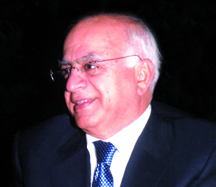The misleading ‘sanctities’
there is nothing easier than using the cloak of religion to conceal human flaws and weaknesses. few things are as effortless, or as seemingly “blessed,” as raising money in the name of religion, whether in the east or the west, regardless of doctrine.
the reason is that those who collect donations under the banner of religion understand that people seek hope, spiritual reward, and peace of mind by giving donations.
at the human friendship society, we suffered greatly from the inability or unwillingness of some individuals to use donations to achieve what they claim they do not. i hope that the new law regulating associations and charitable organizations will put an end to the lax oversight and misuse of charitable work.
despite the sanctity enjoyed by clerics in many religions and the intensity from one country to another, there is a growing sense of apprehension and caution toward them, largely due to the increasing number of violations that have long been covered, tolerated, or silently accepted.
what we are witnessing in our own countries is not unlike what has unfolded in the west, though often to a greater extent, particularly with certain types of crimes. the environment to match these customs and traditions in many eastern societies contributes to the suppression of open discussion around such offenses.
accusations against members of the clergy, particularly within the catholic church, have risen sharply in recent years, especially concerning sexual abuse of children. for centuries, the holy see hesitated to take firm and transparent action on these matters, often choosing instead to remain silent or force the offenders to resign or relocate to then become removed from the communities where the crimes had been committed. these crimes have recently become more public, particularly due to the firm investigative reporting by the international press, and the church’s own ‘admission of guilt.’ for decades, the sexual abuse and exploitation of children by members of the clergy, including senior leaders of religious institutions, independent commissions, and internal investigations, concluded that the clergy were responsible for some of the highest scandals in the history of the thematic abuse and institutional cover-ups.
as public discussion around these abuses has increased, so too has the number of victims willing to come forward and speak out about the crimes they suffered. this leads us to a clear conclusion that the issue is global in nature. it is not limited to a specific region or culture but reflects a recurring pattern across borders.
recent reports from pennsylvania revealed that more than 300 priests sexually abused more than 1,000 children over a span of 70 years.
an investigation by ‘the boston globe’ uncovered decades of abuse within the archdiocese of boston and exposed how cardinal bernard law systematically covered up the crimes by transferring offending priests to other dioceses.
in france, an independent commission estimated that approximately 216,000 children were abused by priests and clergy since 1950, a number that rises to 330,000 when including abuse by non-clerical church staff.
similar findings emerged in australia, where a national inquiry reported widespread abuse by catholic priests between 1950 and 2010. the investigation concluded that the church had “tragically failed” to protect children.
major scandals have also surfaced in germany, canada, ireland, and many other countries. these revelations have caused deep public outrage and delivered severe blows to the reputation and moral authority of the catholic church worldwide.
all of this resulted from a gross misuse of the trust placed in religious institutions, with some members of the clergy exploiting their spiritual authority and the trust of children and their families, making it easier to access and abuse their victims. institutional cover-ups, intimidation, and financial settlements played a major role in enabling these crimes to persist and to escalate.
for many years, the vatican attempted to deny or downplay the scale of the crisis. however, as scandals mounted and public pressure intensified, its position gradually shifted. both pope benedict xvi and, later, pope francis acknowledged the gravity of the crisis and issued public apologies to the victims. pope francis went further, describing the abuse as “atrocities” and a betrayal of the church’s mission. for the first time, he authorized legal proceedings to prosecute abusive priests and to hold accountable those who helped hide or conceal them. this approach must be supported by reforms. there should be no leniency or immunity for offenders, whether in spiritual or any similar form of power.
email: a.alsarraf@alqabas.com.kw






